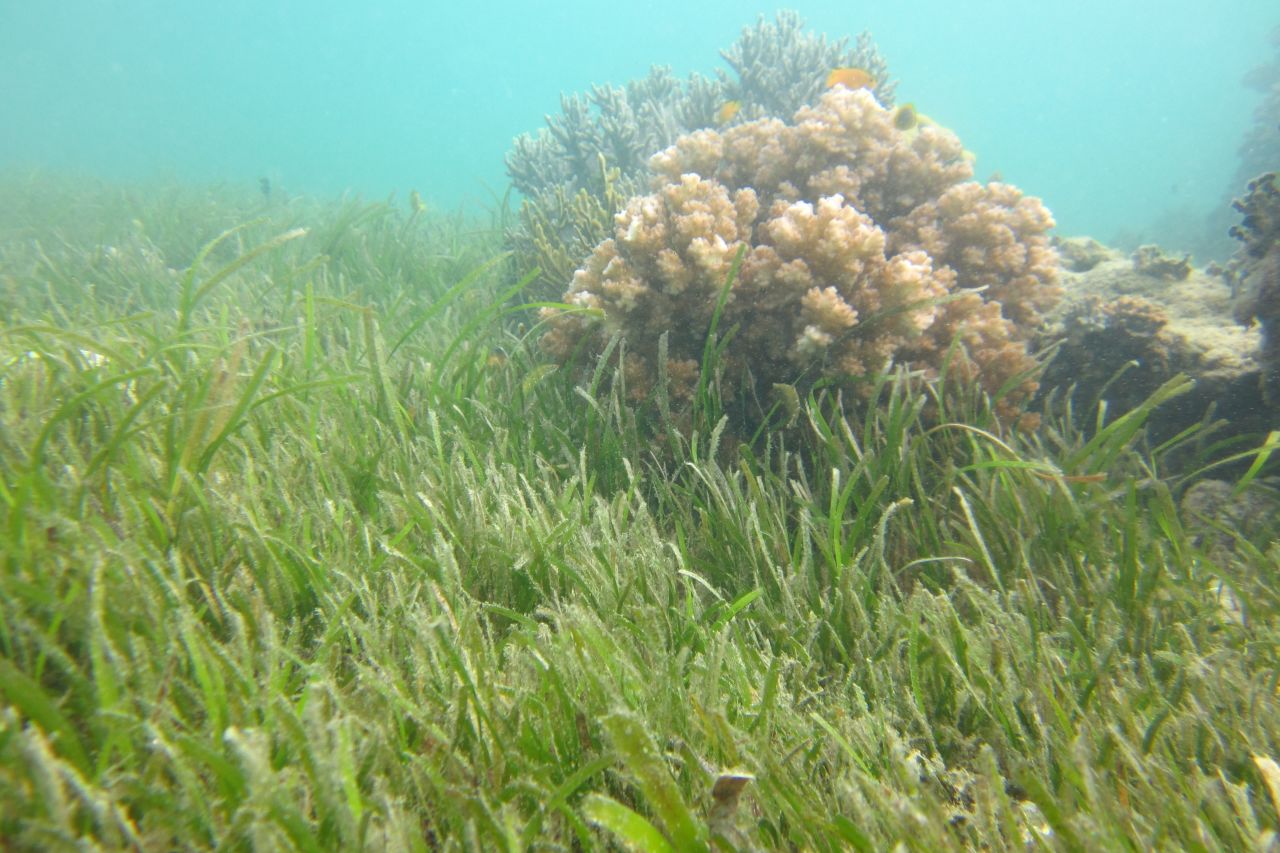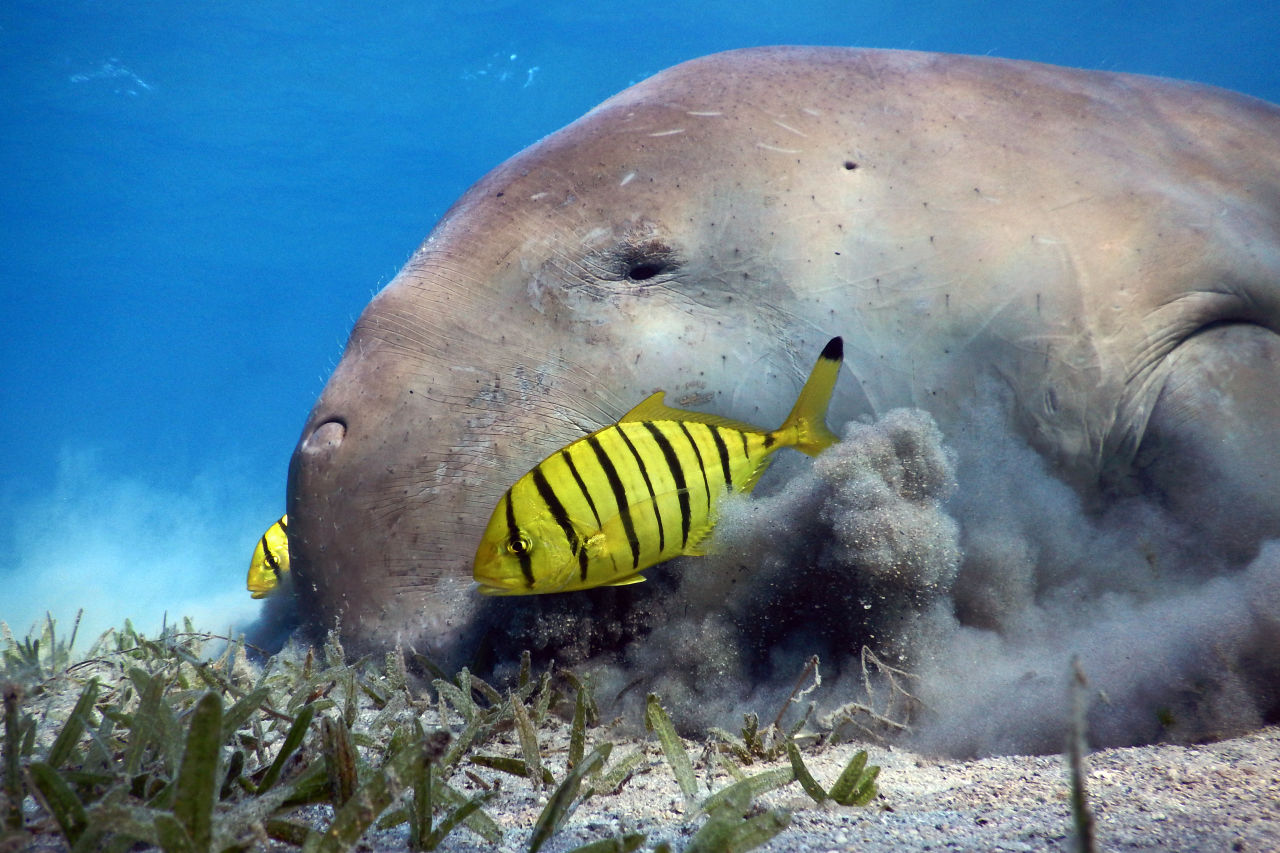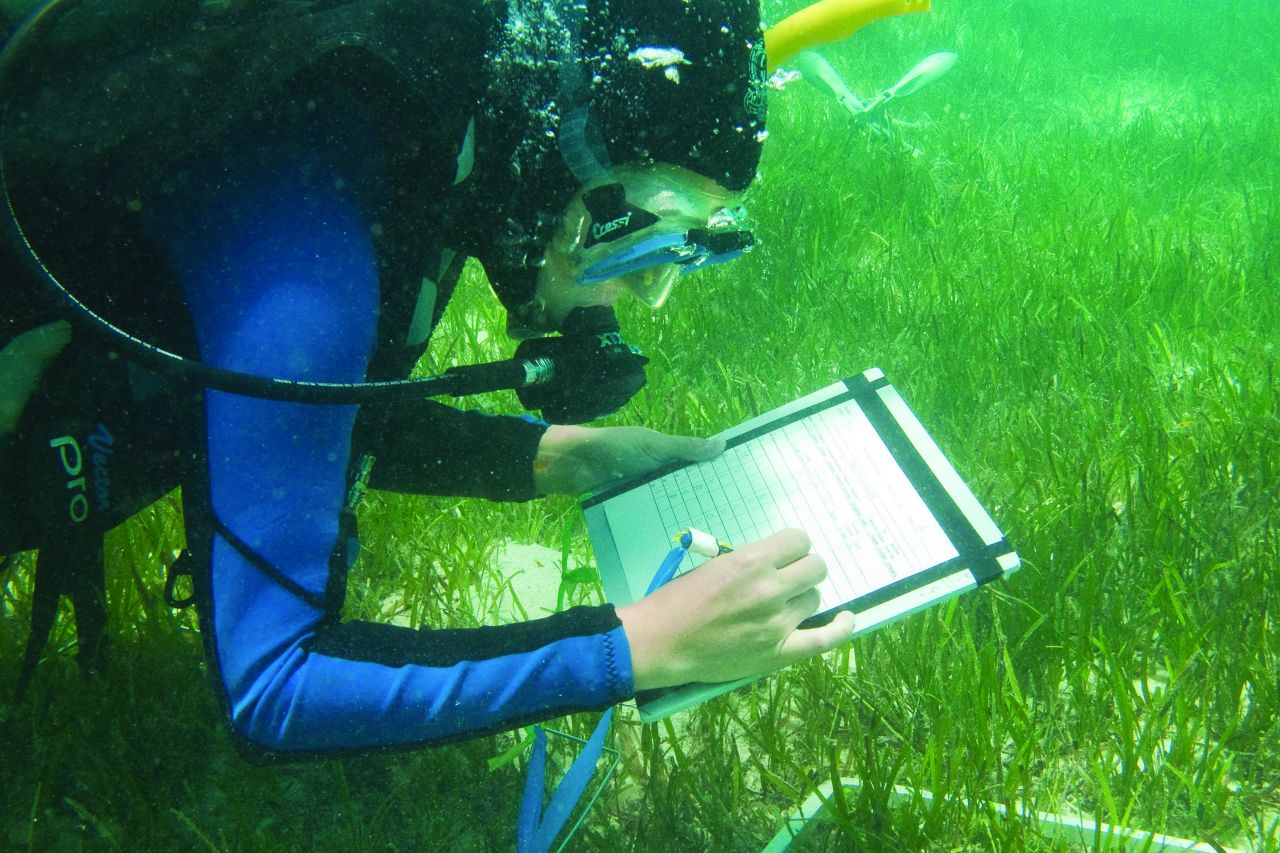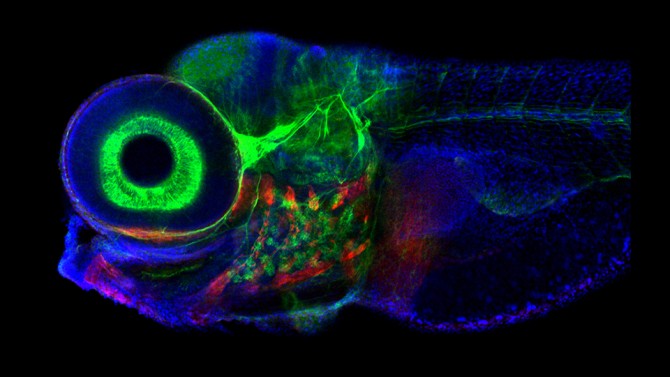Seagrass is the world’s only flowering plant that can live underwater. It’s often confused with seaweed but, like most plants, seagrasses have roots, stems and leaves and produce flowers, fruits and seeds. Despite their common name, seagrasses are more closely related to land-growing lilies or ginger than grass.
Fifteen species of seagrasses call our Reef home, growing in a variety of coastal, estuarine, reef and deep-water habitats. Seagrass meadows on the Great Barrier Reef cover an enormous 4.5 million hectares – the largest seagrass ecosystem on the planet!
#How do seagrass meadows survive underwater?
Specialised roots and leaves have allowed seagrasses to grow and thrive in marine environments for millions of years.
Their leaves are often thin but strong and flexible, enabling them to withstand the constant movement of waves and currents. Seagrasses use the tides and currents to disperse their buoyant seeds and pollen, much like land-based plants would use bees or wind for pollination.
Seagrasses have also evolved to grow on the soft, sandy seafloor by forming a vast network of roots and specialised branching stems that act like anchors and stabilise the sediment.

#How does seagrass help our Reef?
Seagrass meadows are one of the most important habitats on our Reef, providing food, shelter and nurseries for many marine animals.
They are critical feeding grounds for our Reef’s largest grazers – the turtle and dugong – which rely on seagrass meadows to survive. An adult green turtle eats about two kilograms of seagrass a day, while an adult dugong eats almost 30 kilograms a day.
Meadows also act as nutrient and sediment filters for the Reef. Just like a human kidney, they can filter harmful coastal run-off and pollution to ‘clean’ the water before it reaches coral communities.

Dugongs have specialised grinding teeth that help them break down tough seagrass leaves. Credit: Anett Szaszi, Ocean Image Bank
#Why are seagrass meadows under threat?
Seagrass thrives when conditions are just right, with lots of light, optimal levels of nutrients and relatively calm, clear water.
Seagrass habitats are under threat from the impacts of climate change which includes increased water temperatures, coastal erosion and severe storms and flooding. There have been losses of meadows in some areas of the Reef.

#Why is protecting seagrass important?
Losing seagrass habitats means losing the marine animals that depend on them for protection, food, and shelter. Without seagrass, we know that the dugongs and sea turtles that call our Reef home would not survive.
Seagrass meadows also play an important role in removing carbon dioxide from our atmosphere. Known as , they act like enormous sponges, absorbing carbon and storing it internally. In fact, seagrass meadows can store carbon 30 to 50 times more effectively than tropical ecosystems.
When carbon sinks are damaged or destroyed, some of the carbon is released back into our atmosphere, significantly increasing atmospheric carbon dioxide and contributing to global warming.
That’s why it’s critical we invest in and work to strengthen the resilience of our seagrass habitats. We are bringing together local communities, Reef managers and scientists to provide a wide range of resources, connections and technical expertise, all focused on building concrete solutions to protect seagrass sites.
We’re piloting methods for restoration at scale and building a toolkit of resources – including nurseries for a range of seagrass species – to deploy when necessary.








